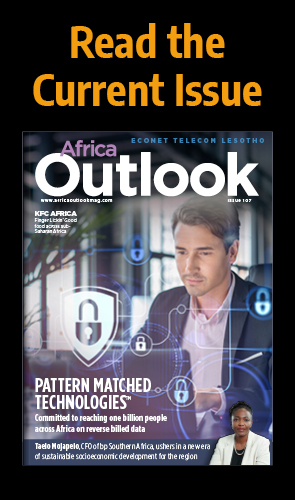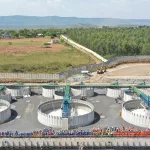
Optimistic Protection of Africans Online
Adrien Diarra, Information Risk Expert, discusses optimism for tech development in Africa, the importance of digital safety literacy and the urgent need for cyber hygiene at the consumer and corporate level
Writer: Marcus Kääpä
“We live in an increasingly technology-defined world. It’s great news for Africa, where 75 percent of the population is under 35, and the improvements in access and affordability of data are driving more opportunities for innovators. However, 70 percent of the continent still lacks reliable internet, and there exists an unprecedented opportunity to help harness the potential and growth ahead.”
For Adrien Diarra, Information Risk Expert, raising the baseline of secure tech adoption across Africa, and the benefits that stem from it, stand as the answer to the continent’s growth and success.
Digital safety literacy is a prerequisite to this adoption. It will foster the establishment of a tech-savvy continental population that can utilise present tools and products en masse, andintegrate itself successfully into the global digital community while remaining secure online.
“There are opportunities for early adopters in the tech sphere, whether these are start-ups, government agencies, or others,” Diarra tells us. “This provides a better experience for everybody involved, from developers to small and medium enterprises (SMEs) and consumers.”
Helping SMEs and promoting community mentorship are two factors towards building a healthy baseline for the tech community. They are key to keeping people safe online while maximising facilitation and technological know-how.
“One important aspect of this is aiding SMEs to better access good practices that will allow them to leverage the 20 percent of security controls that help mitigate 80 percent of known risks to misusing data,” Diarra says.
PRESENT DEVELOPMENT
At the same time as this increase in tech adoption, cybersecurity investments and developments are becoming the core part of many companies, agencies and nations.
According to the African Centre for Strategic Studies, by 2023, the size of Africa’s cybersecurity market is estimated to reach $23 billion, a tenfold increase from 2020. This aligns with the very present and growing dangers of the digital realm.
This is especially concerning when we consider organised crime syndicates whose actions impact thousands of people around the continent. For example, a recent vulnerability given the name Log4Shell was found in Apache Log4j, a widely used Java-based logging utility, part of the Apache Logging Services, used by tens of thousands of software packages.
Log4Shell had the ability for an attacker to remotely utilise arbitrary code that would lead to the downloading and execution of malicious code within an LDAP (lightweight directory access protocol) server. Log4Shell was quickly patched in December but exemplifies the range and complexity of digital dangers today.
Another example is the business email compromise (BEC) scam that has resulted in a collective loss of $26 billion globally from 2016 to 2019, and an affiliate BEC group known as SilverTerrier (most members of which are concentrated in Nigeria) created in excess of81,000 pieces of malware and conducted around 2.1 million attacks, causing billions’ worth of damage to businesses and individuals in Africa and beyond.
“The overall goal is to ensure safer tech adoption. Right now, I see the technology sector in Africa as a glass half full,” Diarra explains. “Most of Africa lacks reliable internet, but a lot of the talent in the technology sector are localised in clusters in Egypt, Kenya, Ghana, Morocco, Nigeria, South Africa, Senegal, and Mauritius.
“Continual funding will only amend this internet issue and see the growth of pan-African tech adoption. Yet with this continental development comes a familiar frontier of challenges in the space, such as hacking, fraud and scams. I am a deep believer in making sure that the growth of African tech happens in a healthy manner, especially when it comes to information risk, privacy and safety in the digital space.”
SAFEGUARDING THE PATH AHEAD
For Diarra, the task of raising tech safety adoption, penetration and digital literacy within Africa revolves around the empowerment of communities.
“Africa is a continent of many subcontinents,” Diarra says. “The experience of communities in the west may differ from those in the east, south, central and so on. Therefore, you have to be mindful of these differences.”
Moving through the decade, it is paramount for companies and tech entities to press forward the notion of digital awareness and safety in line with the rapid adoption of technology.
“I think that information risk emulates the growth of tech products, the need for regulation, the penetration levels of internet connectivity, and the digital safety literacy of the pan-African community, with cyber hygiene being one of the most important factors towards progressing tech development,” Diarra concludes. “Tech entities must ensure privacy and security throughout the product development process; this is the first step. This is then met by safety awareness campaigns of users, how they conduct themselves online, and finally this is kept in check by common sense and user experience-friendly industry-wide safeguards, to minimise online danger and issues that arise from it.
“With a sizeable informal economy, I see digital disruptors as one of the biggest shortcuts to a healthier development. Digital innovation won’t be enough in that journey, but a healthy one that protects communities for the future.”





















